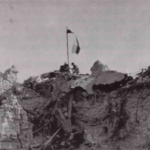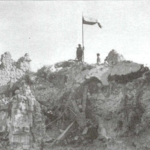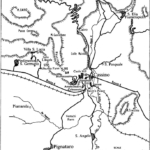 |
Monte Cassino 3DSK |
The Battle of Monte Cassino May 1944. These are the plans of the assault on the 11 of May. It should be understood that the hills to the north of the Monastery of Monte Cassino, such as Hill 569, 593 and Mass Albanetta, were dominating the Monastery proper and they were the key to the success of the offensive. So, the main attack was planed in that direction. At midnight, on 11/12 of May, 1944, the battle of Monte Cassino started with a barrage of artillery fire. It seemed that there was nothing left from German bunkers. It turned out that the enemy had special shelters in caves and when artillery barrage stopped went back to their original posts. The first attack of the 2nd Battalion of the 1st Brigade of the 3rd Carpathian Division on hills 593 and 569 was successful. They started their march from the Doctorâs house (Domek Doktora), as shown on the map. The attackers suffered heavy losses. All officers were either wounded or killed. There were 6 German counterattacks. Finally, in view of the losses, lack of ammunition and intensive German counterattacks they had to withdraw to their original positions. The planned continuation of attacking Mass Albanetta by the 1st Battalion also failed. At this point, Gen Oliver, the Army Commander contradicted Gen. Anders, who wanted to continue the attack, and declared that the 2nd Polish Corps completed its assignment, and by its action allowed the 13th British Corps to cross the Liri River. Further attacks were contingent on the success of the 13th Corps. Between the 12 and 17 of May there was no major activity. On May 17 new assault started. This time the 4th Battalion of the 3rd Carpathian Division attacked Hills 593 and 569. Further to the north, on the right, the 15th Battalion of the 5th Kresowa Division took the Phantom Ridge (Widmo) and the 17th Battalion approached Mass Albanetta. Also, on the 17th of May, some tanks managed to get as far as Gardziel. Fighting for Hill 593 was going on for the entire day of May 17. In the morning of May 18 there was a strange silence. At about 7:30 am, commander of the 3rd Division ordered that the 12 Lancers Regt. send a reconnaissance patrol to the Monastery of Monte Cassino. The patrol, under command of Lt. Gurbiel, crossed the field mine and entered the ruins of the Monastery. They found there only 16, mostly wounded, German paratroopers under the command of a cadet-officer. The battle of Monte Cassino was over. Submitted by Romuald Lipinski. |
|
|
|





